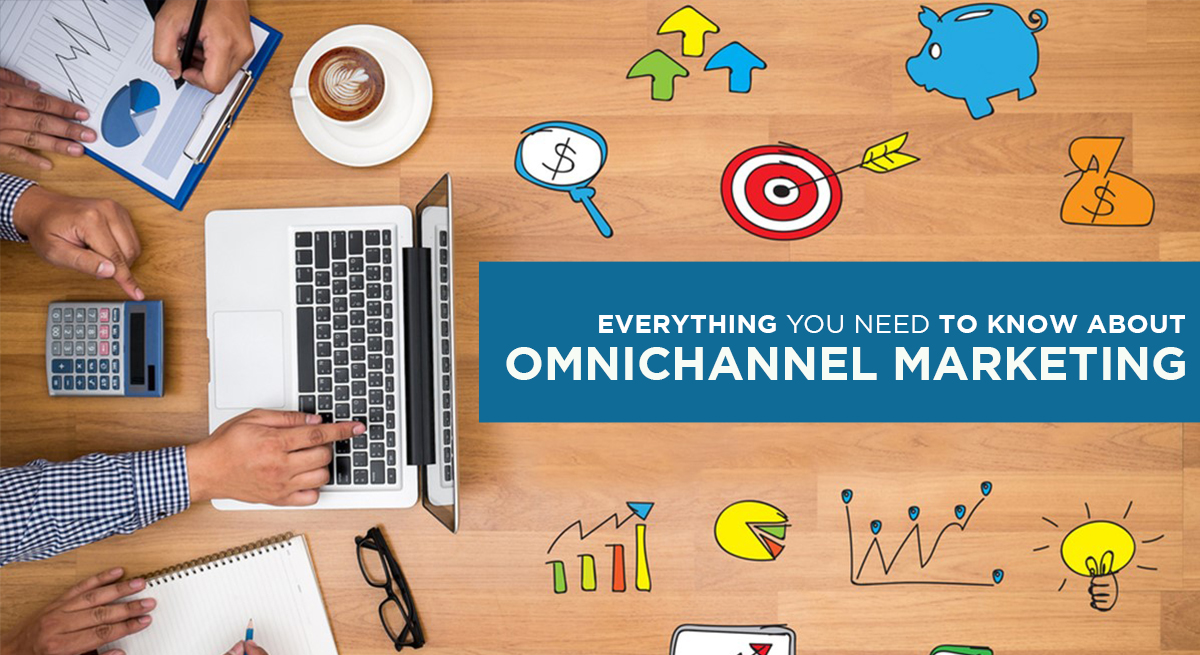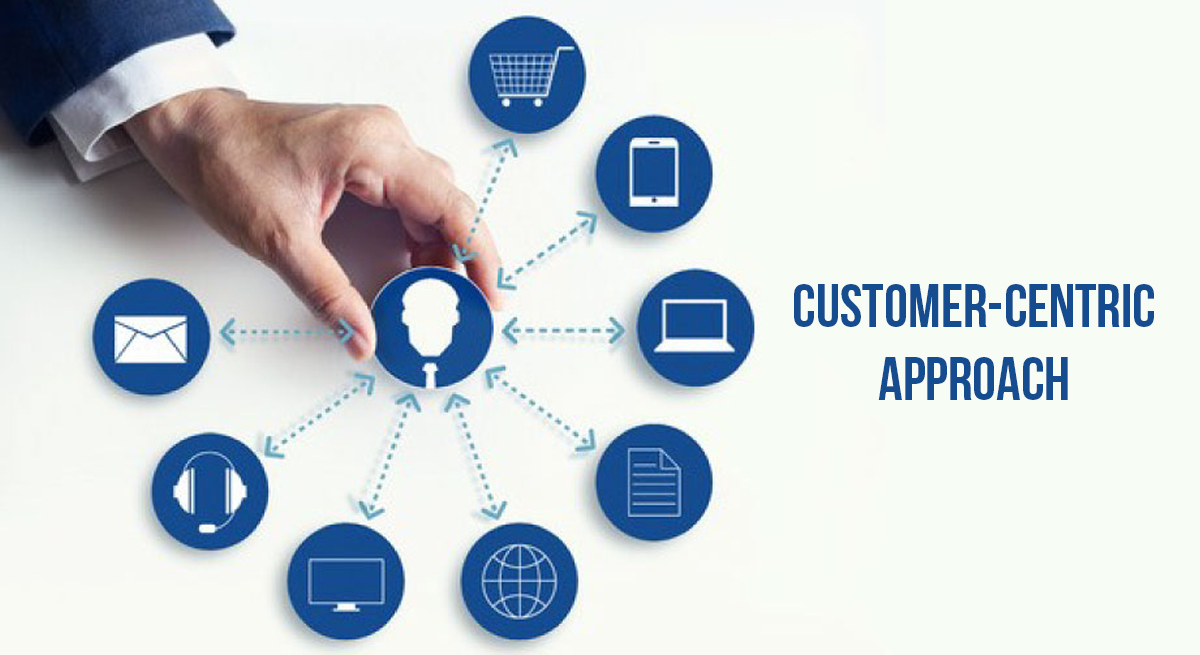

With the advent of technology, more and more marketing strategies have surfaced that have proven to be helpful to brands for accomplishing their goals. Although not new, Omnichannel marketing has been one such strategy that has rapidly grown in 2020, with brands and marketers jumping on the bandwagon. If you are still clueless about Omnimarketing and how it can benefit your brand in 2021, keep on reading.
WHAT IS OMNICHANNEL MARKETING?
Omnichannel marketing refers to creating your brand's image on multiple channels, online & offline, for a positive and seamless customer experience throughout their journey - positive & seamless being the keywords here. Studies have showcased that omnichannel marketing provides an increase of 250% in purchase frequency and 90% overall customer retention rate.
WHY IS IT IMPORTANT?
Omnichannel marketing is essential if you are trying to build a positive brand image and create a seamless experience for the customer at every stage of their buyer's journey. It helps you build high-quality and long-lasting relationships with customers.
OMNICHANNEL MARKETING VS MULTICHANNEL MARKETING – WHAT IS THE DIFFERENCE?
Marketers often use omnichannel and multichannel marketing interchangeably, but they are different in the way that they are implemented. Omnichannel marketing is a strategy that aims to provide a unified and personalized experience to customers. Multichannel, on the other hand, aims to increase customer engagement by using multiple channels like direct mail, SMS, social media, mobile etc. Omnichannel marketing focuses on an integrated approach and all the channels work in unison while placing the customer at its core, whereas in Multichannel marketing, all the channels work independently and in isolation, separate from each other while placing the brand at its core.
OMNICHANNEL MARKETING STRATEGY FOR BRANDS
Before you start working on an omnichannel marketing strategy for your brand, ask yourself whether you have the answers to 3 important questions given below:
- Do you understand your target audience deeply enough?
- Are you aware of their pain points, or challenges they face during their buyers’ journey?
- Do you have enough data on how your customer interacts with your brand across various touch points on various channels?
Once you have the answers to these questions, you can start building an omnichannel marketing strategy for your brand. The data you gather will help you analyse and understand your customer and their purchase patterns even better, enabling you to focus on strengthening your strategy and making sure the experience is seamless and tailor-made for your audience. Also, once you know which stage of the journey your customers face an issue during, you can work on creating a suitable solution for it. While planning your omnichannel marketing strategy, make sure that it includes the following components to get the best results:
- Customer-centric: First and foremost, your strategy has to be customer-centric. Train your employees and staff to provide a consistent experience to your customers.

- Consistent: An omnichannel marketing strategy, along with being cohesive, it is also consistent in nature. The communication on all the channels has to be consistent with the brand’s image and tonality to ensure a seamless experience to the customer.
- Marketing Channels: Choosing the right marketing channels is an important step in developing an omnichannel marketing strategy. Brand’s need to identify the omnichannel marketing platform their audience is present on and is searching for them, and double down on those channels instead of being on all the platforms.
- Optimization: Not only is developing the right strategy important, but it is also worth noting that optimizing the strategy is an equally important step so having the right tools should be one of your top priorities.
OMNICHANNEL MARKETING STRATEGY EXAMPLES
- STARBUCKS:
Starbucks did a wonderful job implementing an omnichannel campaign for their rewards program. They made sure their customers had access to their rewards points no matter where they are, physically and online too.

The channels they included in their rewards program are:
Mobile app
In-store
Online via their website
- DISNEY:
Disney has been at the forefront of Omnichannel marketing, with getting even the smallest details right. With the customer’s initial touchpoint i.e. Disney’s mobile-responsive website. From booking to trip-planning to dining, you can use the My Disney Experience Tool for all of them. You can also use the mobile app to determine the estimated wait time before each ride. To top it all off, Disney released the Magic Band program to help customers have a truly omnichannel experience at the park, with the tool acting as a hotel room key, photo storage device for any pictures you take at Disney and a food ordering tool.
- AYUSHAKTI AYURVED:
We adopted the Omnichannel marketing strategy for one of our clients Ayushakti Ayurved to provide the customers with a seamless, positive experience at the store as well as online. By integrating all the channels and creating a consistent brand image, we retained more customers and brought in new ones as well.
- PEPPERFRY:
Pepperfry adopted an Omnichannel marketing strategy beautifully by pairing its online store with its physical store, for an engaging experience. Customers could shop for a product online or just walk into a “Studio Pepperfry” to look through the products. The design consultants present at the Studio helped the customers find their ideal piece of furniture and made suggestions, so the customers achieve the design they had in mind. When a customer has selected a home décor item, they can either buy it in-store or they can choose to buy it online. This intended to reduce the pressure customers feel while in store for making an impulsive purchase and ultimately avoid buyer’s remorse. Pepperfry reported 10-15% sales from these studio locations alone.
FINAL TAKEAWAY
Now is the time to focus on a customer-centric marketing strategy and omnichannel marketing strategy is the natural evolution that marketeers need. When creating an omnichannel marketing strategy for your brand, take note of these points:
- Proper Marketing Channels
- Personalization of the customer experience
- Optimization of the channels
Sure, omnichannel marketing is difficult to implement but the results that you yield make it worth it. Having the right tools and strategy in place is important to deliver a seamless experience to your customers. If you are still clueless about how to develop an omnichannel strategy, reach out today and we’ll help you with the seamless experience that you aim to deliver to your customers. Reach out to us via business@sociomark.in or DM us on our socials!
Author : Heta Desai (Managing Director)


